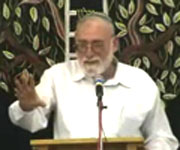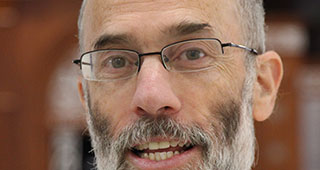Beit Midrash
- Sections
- Chemdat Yamim
- Ein Ayah
Ein Ayah: To divine knowledge, which looks deeply into the depths of all matters in the world, there is a lot in common between darkness and light. There are many positive outcomes from evil people just as there are from righteous people, just that the good comes from the evil through the harsh things that come to the wicked and to the world because of them. Also, in the concealed parts of every person’s heart there is a desire for goodness, justice, morality, and sanctity, even in the heart of a "completely evil person." It is just that the obstacles in life make a person trip into the trap of evil.
Therefore, if we were to delve into the depths of the truth of justice, as seen from the complete understanding of the Master of Wisdom, which delves into the depths of a person’s psyche, the signs of the righteous person and the evil person would disappear. Justice as we know it would not exist in the world, [as the true reality is different from the way we perceive it]. When we look at the full picture of how we view justice, with our view of righteousness and evil, it depends on the way things are projected in our world, not as they are in their hidden depths. It is up to the individual person who uses his free choice, after all the factors that influence him, to bring to fruition his characteristic of righteousness or his characteristic of evil.
Therefore, justice is developed according to that which is done in practice. Even though if we could view things in the depths of people’s hearts we would find things more complicated, divine knowledge is much more complete than our internal view of matters. Actually, the divine perception is more similar to what we see openly – not the superficiality of that which is open but its greatest depths.
This is the recognition that comes from the secret lofty justice of Hashem, which values the significance of the action and that which is actualized in the world. This makes it appropriate to put external signs to distinguish between a righteous person and an evil person. It is not the forehead itself that makes the difference between the two but the writing that is an expression of the practical and powerful divine justice in the land. This is carried out by the angel Gavriel. He was to put an outward sign of black ink on the foreheads of the righteous. If there is not full justice, at least there is not wickedness. This is the symbolism of ink, which is ready to be used for writing and does not come from a source of evil.
Evil will be exposed by its negative sign, made from blood. This shows that the value of justice is not according to the depth that a person perceives because he does not have the mind to see it through, but rather based on practical actions that are open and practical. The way actions are carried out is the boundary between righteousness and evil. This is hinted to in the pasuk: "Say to the righteous that it is good, that he shall eat from the fruits of his actions. Woe unto a bad wicked person, for he will have done to him as the working of his hand makes him deserve" (Yeshaya 3:10-11).

Why The World Needs an Occasional "Shake-Up"
Ein Aya Shabbat 5,23
Rabbi Ari Shvat | Iyar 5783

"Various Levels of Bad & Their Exact Judgement"
(Ein Aya Shabbat Shabbat 5, 29)
Rabbi Ari Shvat | Tammuz 5783

Positive Overflowing of Bounty and Boundaries
Various Rabbis | 5772

Knowing Hashem from Childhood
Various Rabbis | 5771

Various Rabbis
Various Rabbis including those of of Yeshivat Bet El, such as Rabbi Chaim Katz, Rabbi Binyamin Bamberger and Rabbi Yitzchak Greenblat and others.

Moreshet Shaul: A Crown and its Scepter – part II
Based on Siach Shaul, Pirkei Machshava V’Hadracha p. 294-5
Av 5785

Responsibilities Based on Different Modes of Influence
Sivan 26 5777

Status of Child of Woman Who Had Civil Marriage
5770




















